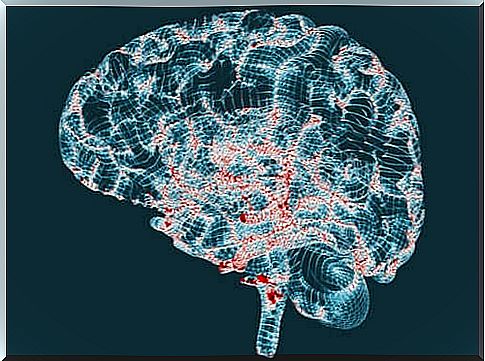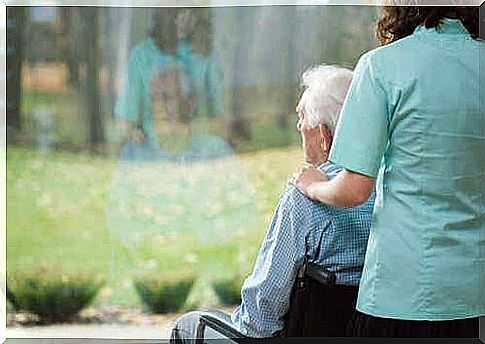Huntington’s Disease: Features And Symptoms

George Huntington first described Huntington’s disease in 1872 and then called it hereditary chorea. The term is derived from the Greek word for dance, ‘choreia’.
He used it to emphasize the usual twists, grimaces, and uncontrolled twists and turns that patients experience. That is why this disease is also called “San Vito’s dance” or “San Vito’s evil” in some places.
Anyway, the current name of the disease is Huntington’s disease and the condition goes beyond motor problems. It is part of subcortical incipient dementias.

Epidemiology
The age of onset is broad, between 10 and 60 years. However, it is normal for it to manifest in mid-life, between the ages of 35 and 50. It can start in two ways:
- Juvenile subtype. Symptoms appear in 3-10% of cases before the age of 20 years. There is a predominance of parental inheritance and a clinical picture characterized by slow movements, stiffness, significant cognitive impairment and even epilepsy.
- Late or senile subtype. Changes after the age of 60 are manifested in 10-15% of cases. This condition occurs through maternal transmission and has a slower evolutionary course. It mainly causes choreic symptoms with little cognitive function change.
The deterioration is progressive after the appearance of the first symptoms. The life expectancy of a patient is between 10 and 20 years.
The genetic cause of Huntington’s disease – a change in brain structure
The genetic change that causes Huntington’s disease occurs in the short-arm chromosome number 4. This mutation then causes a series of changes in the structure of the striatum and in the cerebral cortex.
As the disease progresses, there is marked atrophy of the bilateral caudate nuclei and putamen, along with atrophy of the frontal and temporal lobes.
There is also an alteration in the neurotransmission systems, a lower density of dopamine receptors and a loss of abundant glutamatergic afferents from the neocortex.
The corpus striatum is located in the anterior brain and is the main pathway for information to the basal ganglia. It participates in motor and non-motor functions.
The changes caused in these structures, or the result of their degeneration, are the causes of the characteristic symptomatic triad of Huntington’s disease.
The symptomatic triad of Huntington’s disease
Motor Disorders
These are usually the best-known symptoms of this disease. It starts with small tics and then gradually increases the choreic movements that extend to the head, neck and limbs. They eventually cause significant limitations in one’s life.
For example, walking becomes increasingly unstable and people lose their mobility completely. It also affects their speech and communication becomes more difficult over time.
The risk of choking from swallowing actually increases. In addition, there are other changes such as stiffness, inertia and the inability to initiate voluntary movements, especially complex movements. There is also dystonia and eye movement disorders.
Cognitive disorders
During the early years of this disease, the most characteristic cognitive deficits affect memory and learning. The first is due to problems in retrieving information rather than consolidation problems. However, they retain the recognition.
Spatial and long-term memory impairments are common, although they do not show severe gradual decline.
There is also a change in the memory of procedures, which means that patients can forget how they behave in learned and automated ways. It also affects their attention and they have trouble concentrating and staying focused.
Others suffer changes with verbal fluency, decreased cognitive processing speed, visuospatial changes, and impairment of executive functions.
Behavioral disorders in Huntington’s disease
These may appear several years before the first motor signs. Thus, there are frequent personality changes, irritability, anxiety and disinhibition in the prediagnostic phases.
35-75% of people diagnosed with this condition also develop other mental disorders. Some of these disorders are depression, irritability, agitation and anxiety, apathy and lack of initiative. Also there are emotional changes, aggressiveness, fables and hallucinations, insomnia and suicidal thoughts.

Treatment and improvement of the quality of life of patients with this disease
Currently, no treatment can stop or reverse the course of Huntington’s disease. The interventions are mainly intended to treat the symptoms and to compensate for motor, cognitive, emotional and behavioral disorders.
The aim is to increase a patient’s functional capacity as much as possible and thereby improve their quality of life.
People can address motor symptoms through drug treatment and physical therapy. They can also manage behavioral and emotional changes through the combination of pharmacology and neuropsychological rehabilitation.
Genetic counseling is also a good tool for dealing with this disease. It offers a pre-symptomatic diagnosis to people at risk for this hereditary disease. In this way, they have the opportunity to start treatment early and prepare emotionally for this disease.









